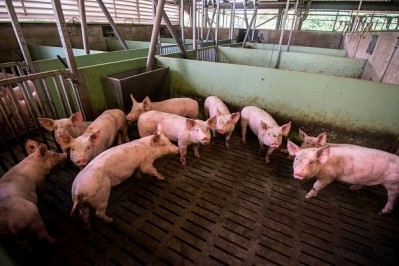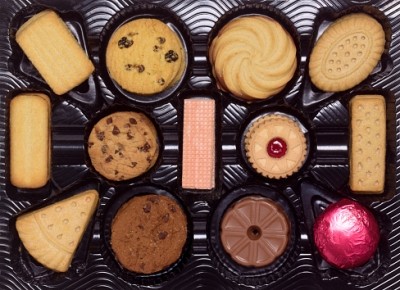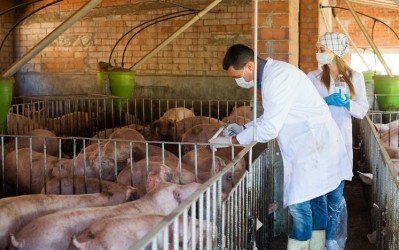From the defensive to the offensive – EU feed sector is retelling its story
Last week saw the EU Feed Manufacturers’ Federation (FEFAC) hold a joint high level EU conference in conjunction with the EU Association of Specialty Feed Ingredients and their mixtures (FEFANA) in Brussels.
Around 170 feed industry stakeholders were present at the event that served as a launch pad for the two trade groups' vision document.
In his keynote speech, Dr Vytenis Andriukaitis, Commissioner for Health and Food Safety, noted how the EU ban on antibiotic growth promoters in 2006 triggered a raft of new feed additives, a development which helped restore competitiveness to the EU livestock sector.
“Innovation in animal nutrition is a vital element in increasing animal health as well as an important step forward on AMR,” added Andriukaitis.
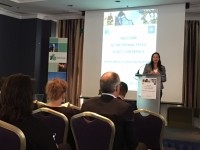
Meanwhile, Ruud Tijssens, FEFAC president, said generating more knowledge on the impact of feed processing and feed composition on gut health and on specific micro ingredients could reduce the need for antibiotics at farm level.
He called for more EU level funding for pre-competitive research into animal nutrition and AMR control to close the knowledge gaps. “This can be supported by co-investment by industry,” continued Tijssens.
The FEFAC president also stressed the role of animal nutrition in the food chain circular economy, noting how the feed industry is able to convert 90 million tons of co-products into high-value feed ingredients for livestock per annum.
Tijssens said innovation in the area of alternative feeds as well as feed processing technology make it possible to continuously reduce the feed industry’s environmental footprint.
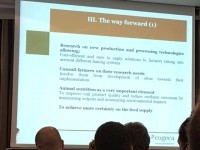
The feed industry can help shape the future by further increasing the use of co-products from other industries and former foodstuffs, he added.
Regulatory obstacles
FEFANA President, Marco Bruni, said the feed additive production sector can improve feed efficiency even further for the EU livestock sector but manufacturers are being held back by the regulatory approval system for the authorization of new ingredients:
“There is a strong market demand for the products we deliver, but we often find ourselves caught in a slowly operating regulatory approval process. The feed industry vision is, therefore, also a call to policymakers and risk assessors to streamline the process.”
Bruni said moves such as greater availability of funds for scientific research and feed innovation, as well increased dialogue among feed and food chain stakeholders were prerequisites to making the FEFAC/FEFANA vision happen.
DSM call for dialogue with EFSA
Dr Georg Kau, VP of animal nutrition and health, innovation and R&D at DSM, suggested less focus on efficacy studies in product risk assessment and a forum to enable industry dialogue with EFSA on a feed additive dossier prior to submission of data would speed up the approval process considerably.
He said a DSM survey showed improving animal gut health is the number one feed manufacturer customer priority, followed by the quality and safety of the end product and only then feed quality and reduced feed costs.
And Kau showed the shift in emphasis for the sector over time. He said the feed production model of the 1960s to the 1980s was about maximizing production, while that of the 1980s to 2000 was about optimizing profitability while minimizing secondary effects, and meeting government regulations at the lowest cost.
Today, said Kau, the feed production model is one of sustainable production from an economic, socially and environmentally responsible perspective.
Efficacy studies
Dr Sabine Jülicher, director for food and feed safety and innovation, DG Santé, acknowledged the huge strides that had taken place in feed safety and oversight since the establishment of the European Food Safety Authority (EFSA) in 2002.
She said she recognized the impatience of feed sector players over the time lag in the feed additive approval process but, responding to criticism of the efficacy constraints in the assessment procedure from speakers and attendees at the FEFAC/FEFANA event, she indicated there would likely be no flexibility on this in the revised feed additives regulation set for 2017.
She also said the Commission had to tread carefully on novel feed ingredients such as insect meal, despite market readiness, as she said there were still knowledge gaps in terms of safety and environmental impacts of such feed inputs.

